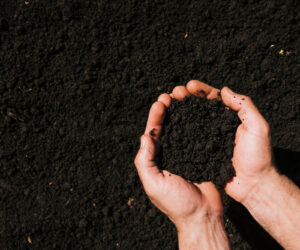Embracing Sustainable Gardening in 2024
In today’s ever-changing world, the importance of sustainability is growing. A quick search on Google Trends for “sustainability” shows a graph that has been steadily increasing for years. More people than ever before are looking for ways to live more harmoniously with nature, and gardening offers a unique opportunity to do just that.
As we step into 2024, let’s embrace sustainable gardening and make it our mission as gardeners to create a greener future. By adopting sustainable practices, we can help conserve water, reduce (and eventually let go of) our reliance on harmful chemicals, and promote biodiversity. And the best part is, we can do all of this while doing what we do best – growing plants!
If one of your resolutions for 2024 is to adopt sustainable gardening, this blog is just for you. This blog discusses some of the most easy-to-implement sustainable gardening practices that will ensure you follow through on your green resolutions for 2024.
First steps towards sustainable gardening
Assess your garden’s eco-footprint: Start by assessing your current gardening practices. Are you using water conservatively? Are you using chemicals? How are you managing waste? This self-evaluation will provide a baseline for understanding your garden’s environmental impact.
Set Sustainable Gardening Goals: Based on your evaluation of your garden’s eco-footprint, define clear and achievable sustainability goals for your garden. Setting specific objectives will guide your efforts and measure the success of your sustainable gardening practices.
Create a Personalized Sustainable Garden Plan: Create a plan that is tailored to the unique characteristics of your garden. Choose areas where you can implement sustainable practices, such as embracing native plants, composting, and optimizing irrigation. By tailoring your plan to your garden’s unique needs and challenges, you ensure sustainable choices align with your goals.
Select sustainable garden design elements: Design or modify your garden with sustainable elements in mind. Consider using eco-friendly hardscaping materials, designing water-wise layouts, and incorporating wildlife-attracting features.
Track and Celebrate Progress: You should keep a garden journal to keep track of how well you are implementing your sustainable gardening plan. Along the way, keep a record of what has changed, what has worked, and what has not. Celebrate milestones, such as the flourishing of native plants or a decrease in water consumption. Regularly revisiting and adapting your plan ensures a dynamic and evolving approach to gardening in harmony with the environment.
Sustainable Gardening Practices to adopt
Embrace Native Plants
Native plants are your best friends when it comes to sustainable gardening. They are already adapted to the local climate, so they require less water, maintenance, and care than non-native plants. They’re also more likely to attract beneficial pollinators like bees and hummingbirds, which are essential for a healthy ecosystem.
So, opt for native plants that are native to your area. You’ll be doing your garden and the planet a big favour.
Harness the Power of Composting
Composting is like magic for your garden. It transforms kitchen scraps, yard waste, and other organic materials into nutrient-rich soil enhancers. This not only improves soil structure and water retention but also reduces your reliance on synthetic fertilizers.
You can create your own compost pile beside your garden. Alternatively, if you do not have the resources to do so, you can use a peat-free compost that suits your requirements.
Conserve Water
Water is a precious resource, and should be used wisely. Incorporate water-efficient irrigation methods, such as drip irrigation or smart watering systems into your garden. Choose drought-tolerant plants that can survive on less water.
And remember, rainwater harvesting is a great way to capture and reuse water.
Sustainable Landscaping
Sustainable landscaping is about creating a garden that blends seamlessly with nature. Minimize the size of your lawn, and replace it with native plants that attract pollinators. Use permeable surfaces, such as gravel or natural stone, to allow rainwater to get into the soil. Create natural stone pathways and borders to add aesthetic appeal without harming the environment.
Introduce Polyculture
Diversity is key to a sustainable garden. Instead of planting a single crop in large quantities, consider polyculture i.e., growing a variety of crops together. This practice helps mimic natural ecosystems, reduces the risk of pests and diseases, and enhances overall ecosystem health. By integrating different plant species, you create a balanced and thriving environment for all living beings.
Adopt Integrated Pest Management (IPM)
Do not use harmful pesticides. Instead, embrace Integrated Pest Management (IPM). This approach focuses on preventing and managing pests through biological control, cultural practices, and the careful use of environmentally friendly pesticides as a last resort. Encourage small predators like ladybugs and spiders, and use companion planting strategies to deter pests without compromising the health of your garden.
Educate and Involve the Community
Sustainable gardening extends beyond your garden. Take the initiative to educate your community about the benefits of sustainable practices. Invite a fellow gardener over when you’re doing some major rework on your garden. If possible, organize workshops, community garden projects, or even seed exchange events. By fostering a sense of environmental responsibility within your community, you contribute to a larger movement towards sustainable gardening and living.
Summing Up
Starting this new year, adopt sustainable gardening practices to foster a healthier planet for ourselves and future generations. As gardeners, we have the power to make a positive impact on the environment. Sustainable gardening transcends being a mere trend; it is a way of life essential for the well-being of our planet. Take the first steps by implementing small changes in your garden today. Embrace the green revolution, and let your garden become a beacon of hope for a greener planet.
Looking for more sustainable gardening updates?
We regularly write blogs about sustainable gardening for our community of gardeners. Here are some of our other recent ones:
- Sustainable Gardening: 5 Tips to Grow Exquisite Summer Flowers
- The Science of Soil and How Multipurpose Compost Can Enhance Soil Fertility
- CREATING THE PERFECT DIY POTTING MIX WITH COMPOST
Want the latest of the latest delivered to your inbox? Just enter your email ID at the bottom right of this page!












